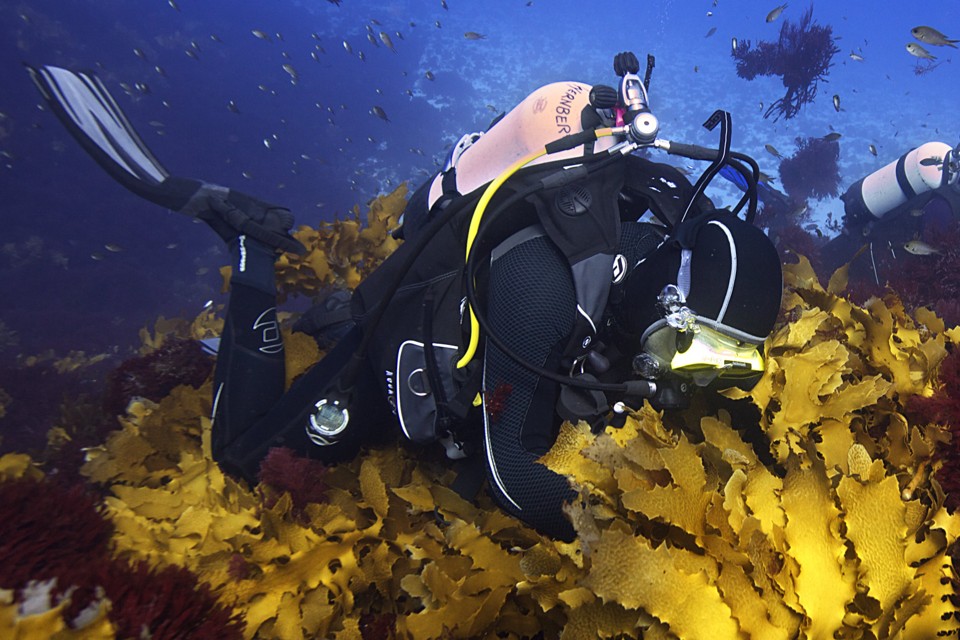The Ed's Up #144
Book news
We're almost a month away from publication in the US and I wrote a little post about it on my blog. (It's funny; the publication date almost marks the ten-year anniversary of my career as a science writer.)The Week, WBUR's On the Point, and Booklist all picked I Contain Multitudes as one to watch, and Kottke gave it a nice shout-out. A few more event announcements, too:
- I'll be chatting with Robert Krulwich at New York's Strand Bookstore on August 10th, and tickets are now up for sale.
- I'll be discussing uncertainties and unknowns in science writing with the wonderful Maria Konnikova at the Festival of the Unknown, again in New York on August 13th. Booking info to come.
- I'll be talking to computer scientist and microbiome researcher Eran Segal at an Intelligence Squared event in London on November 5th.
- Details about these and other events will be posted here. And as always, you can pre-order the book here

Australia’s Other Great Reef Is Also Screwed
"They last dived the area in 2010. Then, as in the previous decade, they had swum among vast forests of kelp—a tagliatelle-like seaweed whose meter-tall fronds shelter lush communities of marine life. But just three years later, the kelps had disappeared. The duo searched for days and found no traces of them. They only saw other kinds of seaweed, growing in thin, patchy, and low-lying lawns. “We thought we were in the wrong spot,” says Bennett. “It was like someone had bulldozed the reef. It was like a moonscape underwater—scungy, brown, and empty.” (Image: Joan Costa)The Space Station Is Becoming A Spy Satellite For Wildlife
"Frustrated by these limitations, Martin Wiselski at the Max Planck Institute for Ornithology devised the ICARUS Initiative (International Cooperation for Animal Research Using Space). His team has developed extremely light radio tags that can be fitted to even tiny animals, and they’re sending a dedicated receiver to the International Space Station next summer. Once it’s up, it will be able to map the whereabouts of hundreds, if not thousands of birds, bats, and other travelers, in real-time. “It will be the best ever possible sensing network of life on the planet,” says Wiselski." (Image: Reuters)
100 Million Years of Decorating Yourself In Junk
"Every year, in northern Myanmar, thousands of farmers pull tonnes of Cretaceous amber out of the ground, and send the glistening nuggets to local markets. For six years, Bo Wang from the Chinese Academy of Sciences and his colleagues have visited the markets and sifted through 300,000 of the glistening nuggets. It was a lot of work. Then again, it takes a lot of work to find animals that spent their whole lives trying not to be found." (Image: Wang et al.) 
Fast-Swimming Swordfish Automatically Lubricate Themselves
"Swordfish steaks frequently appear on menus and dinner plates around the world. But even though many people have hooked, hacked apart, and devoured these majestic fish, few truly understand their bodies. Indeed, until John Videler from Leiden & Groningen University started studying swordfish, no one knew that they had a fist-sized gland in their heads, which slathers lubricating oil over their famous pointed snouts." (Image: Postdlf)
More good reads
- The most terrifying childhood condition you have never heard of. A wonderful new piece by the ever-talented David Dobbs
- California town fixes crooked kerb, breaks geologists' hearts. By Camila Domonoske
- The Loudest Sound In The World Would Kill You On The Spot. By Maggie Koerth-Baker
- "It is the only library in the world that exists and operates in two countries at once." By Sarah Yahm
- How one man repopulated a rare butterfly species in his backyard. By Zachary Crockett
- Nettie Stevens discovered XY sex chromosomes. She didn't get credit because she had two X’s. By Brian Resnick
- Poaching Leaves Elephant Daughters in Charge. By Amy Yee.
- “For me, the engine of writing is almost always ignorance. I write to figure out what I think.” The wonderful Pulitzer-winning Kathryn Schulz talks about writing.
- The Dreamiest View in the Universe. Adrienne LaFrance on the Juno mission
- The Chicken and EEG Problem: Looking For a Humane Way to Kill Chickens. By Sarah Zhang
- And for some relief in a rough couple of weeks for international news, here are some pictures of fireflies.
And that's it! Thanks for reading.
-Ed
Don't miss what's next. Subscribe to The Ed's Up:
